Interview with Capture One’s CEO, Rafael Orta: How Capture One is becoming more agile than ever before
posted Wednesday, March 17, 2021 at 11:29 AM EDT
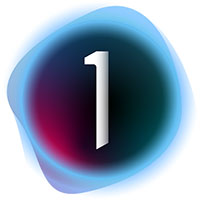
I recently chatted with Capture One's new CEO, Rafael Orta, to discuss his role with the company and his vision for Capture One moving forward. Capture One is a very popular photo editing and tethered capture solution for many photographers, hobbyists and professionals alike.
Orta and his family left Venezuela in 2003 and their next stop, Copenhagen, Denmark, marks their fifth international move. The jet setting Orta brings with him a wealth of experience in many different roles, including as a technical engineer, systems analyst and executive. Orta has previously worked for companies such as eBay, where he served as vice president for a decade.
My interview with Orta covered a wide range of topics, including his commitment to becoming a more practiced photographer, the company's improved commitment to open communication with its customers, how Capture One balances technical excellence with accessibility, and much more. The following interview has been edited for clarity and length.
Imaging Resource: Capture One is famous for its work with photographers. Do you have any special connection to photography itself?
Rafael Orta: Although my photography is mostly casual, I have a sensibility for the idea of capturing a moment. A lot of that surrounds my family and my travels, and trying to capture a moment and having something that allows me to hold onto it. In joining Capture One, that's one of the things that I want to bring, the possibility of technology helping advanced photographers and people that are very capable in the craft being able to achieve the vision that they have in their heads for the image.
Of course, I will get a lot more interested in photography. That's one of my commitments with the team, to take some training and learn more about the craft so that I become much more competent in it.
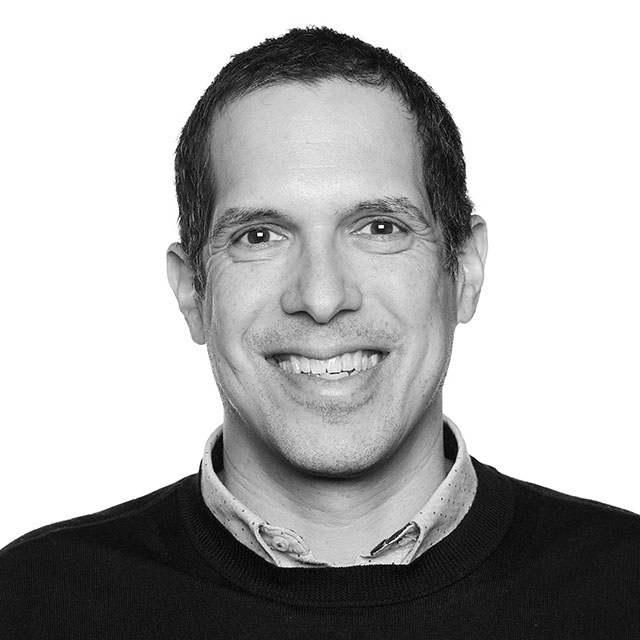
IR: On the topic of smartphone photography, with basically everybody always having a very capable camera on their person, are mobile editing solutions something that Capture One is considering moving forward? Either a dedicated mobile application or some sort of cloud-based services?
RO: One of the things that I bring to the company is quite a close understanding of the tectonic plates that have moved in in technology. Clearly mobile has caused huge displacements in many industries. The same is true for cloud and the same is true for AI. I think of our roadmap in terms of two different things. One of them is what are the new features and capabilities and improvement, so things like editing tools and optimization of the workflow, all these things happen inside the application. So, that's one stream. And then the other stream is what are fundamental shifts in the technology landscape that should invite us to rethink how the application works.
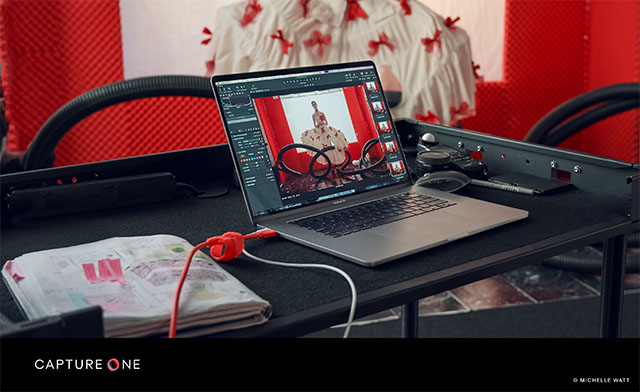
So yes, these are all things that we're thinking about, without losing sight of two things. The first one is who we serve. We serve advanced photographers, whether you're a hobbyist or a pro, but in any event, you have to be in that space of being someone who wants to buy a device and have an image editing software that gets the best out of your images and allows you to achieve your vision. And secondly, what our strengths are. Our color engine, lens calibration system, workflow tools, like tethering, all of those things we need to continue to serve. We're very conscious, and increasingly so, of the large shifts that have happened in the technology landscape and we’re very curious about how they will make our core even stronger.
IR: Obviously, there is some overlap in feature set between Capture One and other software solutions like Lightroom. You spoke to the color engine already, do you think that's the biggest thing that sets Capture One apart, or it something else?
RO: I have experience working in companies of many different sizes, in many different industries and with different areas of focus. There is something exceptionally powerful about being a company of our size, with our degree of focus on a particular customer segment, and having achieved the level of excellence that we have achieved in the craftsmanship of our core strengths. When I think about our size, what I think about is that we don't have huge distractions, neither in the form of the organizational structure itself or in the form of having a portfolio of businesses.

We focus very squarely on our customers and how we can speak to them very frequently. We can invite them into the dialog with us. Also, a lot of our team members are very accomplished photographers, some of them even have side hustles as photographers. And in terms of craftsmanship, it's something that we have developed over many, many years, including from our starting point of being a company that was part of Phase One. It is in our DNA to have a very deep understanding of the hardware itself. We can build software that works exceptionally well with that hardware.
You can take any one of those things, but the combination of them is really hard to replicate and is particularly hard to replicate when you're a large company. We think have a distinctive advantage and we are intent on protecting that DNA.
IR: I think that the passion that the team has definitely shows through in the end product.
RO: Yeah, undoubtedly. We have the determination to build a product that works incredibly well for the customers that we have. Also, that starts from our team's point of view about what is the best way to do this. That point of view starts from the personal use, knowing that this is something that I can use and will use for my own photography.

IR: Continuing that thread, can you speak to how your background is going to impact how you operate as CEO of Capture One? What is special about your background that you think will allow you to further the company's goals and double down on the strengths it already has?
RO: There are three things that I'm trying to bring to the company. The first one is that I started my career as a technologist, and that led to a very fundamental belief in the way that technology makes the world better. When I was looking for my next role last year, I was looking for a business where you could clearly see how technology was improving the world in a meaningful way.
Secondly, I have been a product executive for quite a long while. One of the things that it has given me is the ability to look at a company from many different angles. I look at the technology, but I also look at marketing, the people, the financials, and I develop an integrated point of view and help all the different parts play with each other and be effective. Something you can expect in the next few years is that we'll continue to develop exceptional software. We will also make sure that the way we reach consumers, how we engage with the community, how we price our product, and how we simplify some of the models we have will be given as much consideration as we give to the software itself.
The final thing is that we're a very proud Danish company, but we are also a global company. We serve customers around the globe, and I bring that insight and that consciousness about how we make sure that in everything we do, we constantly remind ourselves that we started here, but now we're wrapped around the world.
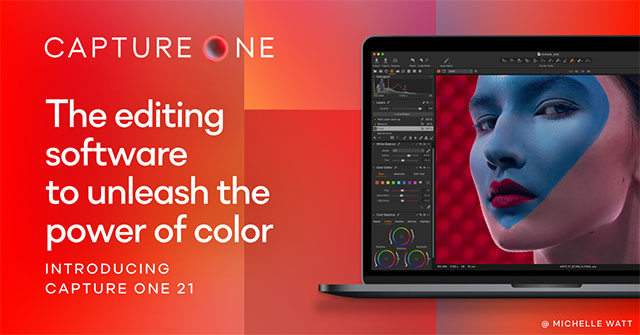
IR: In your open letter a few weeks ago, you talked about openness and improving communication between the company and the user base. Can you expand on that a bit and let customers know how things are going to be different moving forward?
RO: Yeah, so it's one of the big changes that we have implemented with the team. I want to make sure that everyone who is a customer, trialing the software, or is interested in Capture One not only has an insight into what we can do today but also what we are building. If you've noticed, over the last few weeks we've started to talk about what's coming in the next release of Capture One 21, and hopefully that has started to excite our users about the work we are doing. We will keep doing that and keep looking further into the future so that our community, the media, our ambassadors and influencers have good insight into the things we are working on and how Capture One is going to change in the future. I think we have been relatively good at engaging and listening. I also want to convert that engagement into dialog.
IR: Does that mean that user feedback and suggestions are taken into consideration when planning updates?
RO: Most definitely. As we reveal more and more of our roadmap in the next few weeks, I hope that more people will see themselves represented in the work that we are doing. I'm very proud of what we have achieved in terms of sharing and communicating what we are doing, but I'm not satisfied. There's so much more that we can communicate and you will see a lot more from us.
IR: Is the current pricing model, with subscription and perpetual license options, conducive to regular updates? How does your pricing model impact the release of updates, and is it difficult to balance spending resources to develop updates to existing software versus developing updates for the next major release of the software that you ultimately want perpetual license users to purchase?

RO: There have been huge changes under the hood in the way we build software. In the last couple of years we made a huge investment in expanding and growing our development team. We opened up an engineering site in Athens. We also embraced agile software development methodologies and accelerated the pace of our software development. That in turn has led to the establishment of a new principle in how we operate that is as soon as a feature is ready, we will ship it. You will see us delivering more features and more improvements more regularly. You have started to see it this year and you will continue to us accelerate.
At the same time, there will always be this undercurrent of 'what are major pieces of work that cannot be accommodated in one, two or three sprints but actually where you need to work 8 or 10 months to build competency and capability in that major piece of work?' And we will continue to do that and that will be the backbone of our major releases. We are accommodating both, that's the kind of thing we are doing today. We have also begun to improve upon firstly, how we communicate the things we are working on. Secondly, what are the principles that we want to embrace in such a way that it is extremely clear for us and our community that as soon as these things are ready, we will ship them.
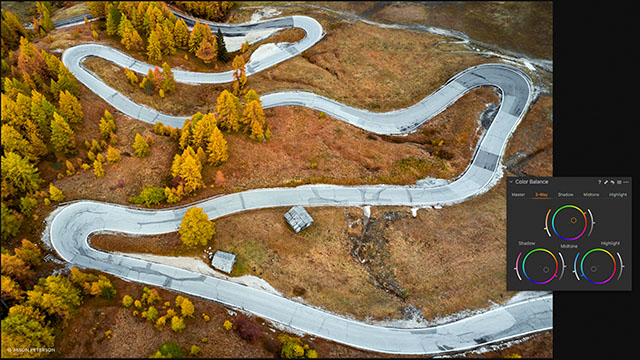
IR: Just to make sure that I understand, you're saying that what determines the features that are available within weeks of being finished, versus something that's not released until a major revision to the software, is simply the amount of time it takes to develop that particular feature?
RO: And how fundamental it is to the application. For example, take something like the Style Brush, that is in Capture One 21.1. That's a new editing tool. It doesn't break the entirety of the framework of how you use Capture One or pick which tool you'll use. It's an addition. That type of thing we can release with great frequency and as soon as it's ready. We will continue to make the tool better and make sure we have all the communication and education for users for whom that tool is valuable. They know it's there and they get it immediately.
There might be other changes that are much more fundamental in the architecture of the application. For example, you were talking about if Capture One will embrace the cloud. Now, cloud is not a feature. Cloud is something that requires us to rethink the architecture of the application and will naturally take us longer. We need to figure out what cloud mean for Capture One and what are the type of capabilities we would expect to put into our software to embrace cloud. Those are the types of things we will see in the major releases.

IR: Speaking of the Style Brush, I'm excited about that feature.
RO: We are as well, glad to hear it.
IR: It's something that I think will save a lot of photographers a lot of time and energy. Ultimately, I think that's one of the reasons people like Capture One so much. There are tools that make it simple to be able to get high-end results. Any tool that makes that is easier is exciting.
RO: We're super excited about it. We're excited about what it will do the moment when it's released and to see people create their own styles for the brush and exchange them with other people. We're really excited about all the different ways it will be used. It's a really dynamic thing. It also speaks to the insight that our team have into the ways photographers work and the type of things that will allow them to edit, retouch and achieve their vision in a much better way.
IR: Yeah, I think that's a great example of the passion people have for photography on the team. It's a reflection of that.
RO: Undoubtedly.

IR: Even as someone who has used Capture One for a while, every time a new release comes out there are new things I have to learn. Capture One has often made it simple to learn the new tools. The educational resources in the app and on the website are excellent. Is there a possibility of expanding upon that further and integrating the community more as part of your online resources? You just mentioned photographers sharing their custom brushes with each other, is that something that might be supported as part of an online community that Capture One builds for people?
RO: I think that our community is one of the most exciting facets of Capture One. We have some incredible team members like María [Pérez-Cejuela] and David [Grover] who produce great content. Quite recently, we have started to collaborate with creators and photographers to co-sponsor some of this content. It is something you will see us doing a lot more of. It's an ever-expanding community of people who have tremendous interest in photography. One of the things that really excites me about where we are in the history of technology and photography is how incredibly open and available these resources are and we would love to increase our participation in that. We have our own voice in the way we do this, but we also know that there's a great willingness to collaborate across all the different people in those communities. There are global platforms that have made this easier than ever, and it's something we have increased our capacity to do. We're excited and we will continue to experiment for a long while.
The most fundamental thing for us that ultimately, we want to make it about the community and the people. We might decide in the future if we need our own platform or participate in different platforms but that isn't the first decision we want to make. The first decision is to engage with people and make human connections. As that evolves, we might decide which are the right tools and platforms, but for now we are experimenting a lot with the connections we create.
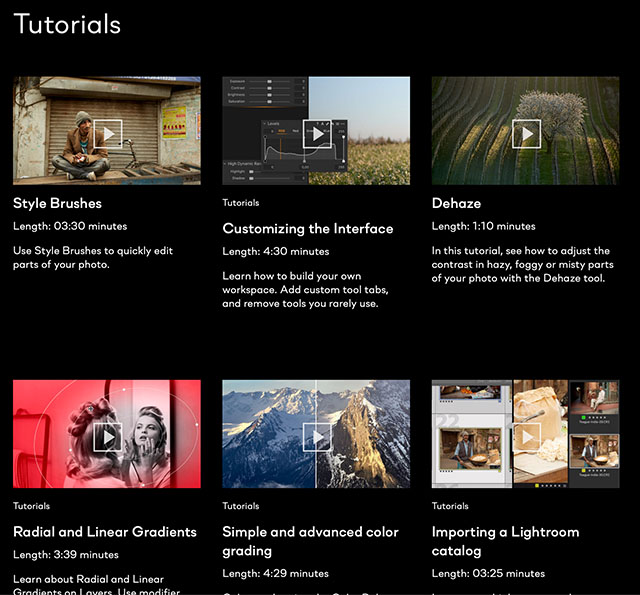
IR: To change gears a bit, now I don't know if this is publicly available information, but what's the adoption been like for the subscription model since it was introduced?
RO: It's going very well. It has grown very rapidly. We think it's a fantastic value proposition for users of Capture One. We have tried to create both flexibility in the model, in the sense of having a monthly subscription, but also having other subscriptions that are much more cost-efficient if you are planning to be a customer for a longer while, like with an annual subscription. We've seen tremendous growth of that segment of our business. We still have a large segment that chooses to buy licenses and we think that will be the case for a very long while. But we're very satisfied with how the subscription model has evolved.
Quite importantly, there's a change that the subscription model has brought to the way that we run the business and how we interact with our customers and community. If you think about the speed of our development, and the speed with which we want to bring new features and capabilities to market, those are characteristics of a subscription model because you want to constantly have engagement. The customers who have paid for a subscription have an expectation that it will translate into ongoing improvements. So all of those things have been very good for us and we're very satisfied that many of our customers have chosen to go that way.
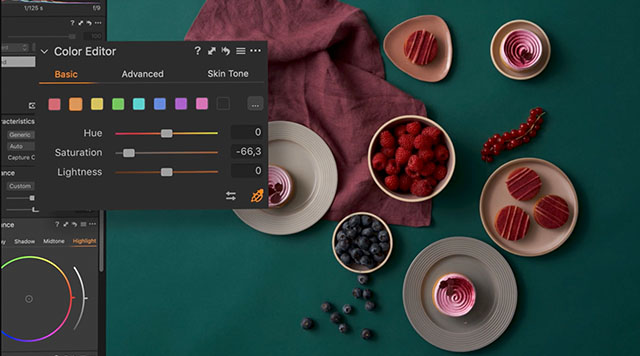
IR: Just a quick follow-up question. You offer Capture One for Sony, Fujifilm and Nikon. How has the reception and adoption been for those brand-specific software solutions? How have these options impacted the user base as a whole and is there any potential for additional brand-specific versions down the road or are you happy with those three now?
RO: It's been a very effective acquisition tool for us. On the one hand, it's created a very powerful connection between our brand and brands that have huge equity in the photography ecosystem. It's been great. We recognize that we're a player in that ecosystem, but photography is an endeavor where many different parties will be involved. In that sense, we're delighted about it. At the same time, we still have the product that supports multiple brands if that's the use case one of our customers has. We will continue to evolve the way we think about our product lineup, the number of SKUs we have, and also the different pricing models that we have, largely in the interest of making it really simple for any given customer to choose the right product for them and their needs and which is the right pricing model for their needs. That's something we will continue to evolve, largely in the interest of making it simpler for customers to make a choice.
In doing that, we want to make sure that we continue to partner very effectively with all of these manufacturers. Late last year we introduced a great partnership with Leica and we will continue to see more of those. We have found it incredibly effective to have a two-way conversation with other participants in the photography ecosystem.

IR: The camera profiles that Capture One is able to build out are definitely a strength of the software. I imagine that having really strong relationships with these different brands makes that possible.
RO: And it makes it possible for us to release them earlier and earlier. If you think about the work we've been doing with Sony and their Alpha 1, and converging the timings of the launches like that has been a major benefit of us having strong relationships with all of these brands. Getting to the point of mutual recognition of the different roles we play, and ultimately understanding that we serve the photographer, that's what really matters. There's this creator, businessperson, hobbyist, that wants to create beautiful images. We have to figure out how do we make sure that we make it really simple for them to do that and to choose our product.
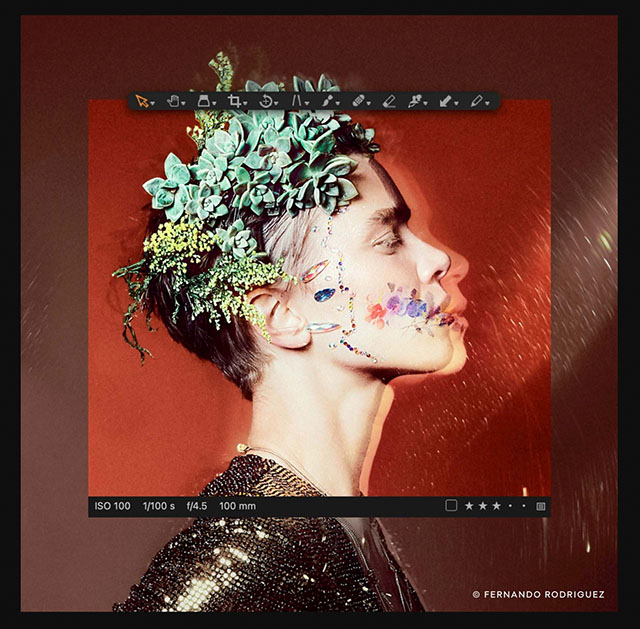
IR: That's a great point about the Alpha 1 being supported when it releases in Capture One 21.1. And that's true too of the GFX 100S. It wasn't that long ago that a medium format camera from Fujifilm just wasn't supported at all. It's great to see how quickly things have evolved with Fujifilm, and Sony as well, having their own branded versions. Of course, it's not just those companies, things are being supported much quicker than they were two or three years ago across the board.
RO: Yeah, we still have a long list and big ambitions to bring the support to many more brands and models. Where it makes sense, where the capabilities of the camera require us to have profiles that have been specifically optimized for them. It has been a specific area of focus for us a number of years. In the last few months, we have really developed some velocity in our ability to work through that last, and that in combination of our partnerships, means we can be very efficient in doing that without losing any of the requisite quality in the work that we do.
IR: Right, because you don't want to just support a camera for the sake of supporting it.
RO: That's right.
IR: You want to make sure you really knock it out of the park.
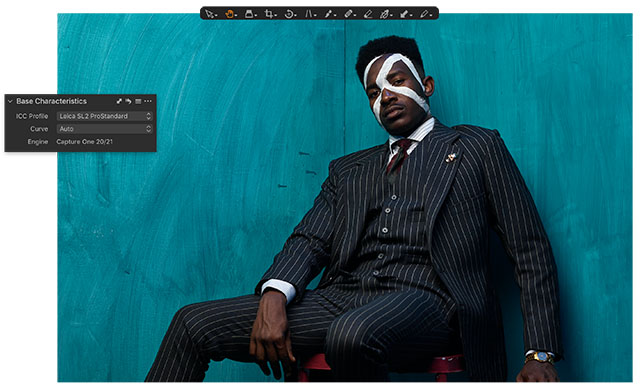
RO: That's right. It's a huge process. The partnerships with the manufacturers have given us insights and capabilities that mean that we can do it really well and time it in a way that works fantastically for the market. And all of this combined our willingness to release more software, more often, so that we're always staying either ahead or with the curve.
IR: Have there been any under the hood changes to the software architecture that's allowed Capture One to develop profiles quicker? Is it just that there are more people dedicated to task? Or is it that you have a better relationship with your partners?
RO: It's all of them combined. On the one hand, we have organized ourselves and our technology team in ways that allows them to sustain significant focus on profiles. But also the algorithms and software that we build. We've modularized in such a way that we can get the work done much more effectively.
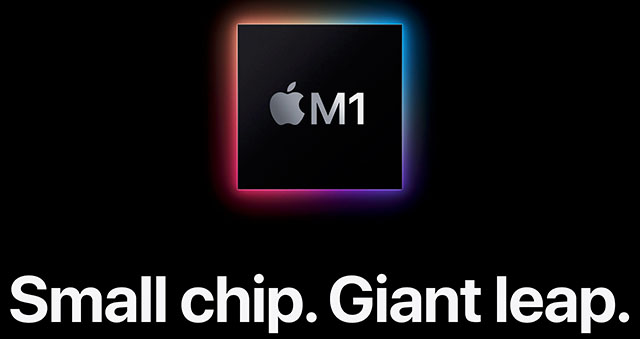
IR: I know readers would like to know about Apple silicon support. It has been mentioned briefly before, but I didn't know if you could give any more details or a timeline.
RO: We're incredibly advanced on the porting of the software for Apple silicon and we are anticipating a release date ready to be announced next month. It's one to stay tuned for. We have made a lot of progress on the port.
IR: That's great to hear. Those computers seem very popular with people. I've been using Capture One under Rosetta emulation and that's worked well, but I am excited to see what performance gains there'll be a with a native version of the software.
RO: It's absolutely amazing hardware. We are very dedicated to getting our software to perform the best on the hardware, because it really is an exceptional achievement that Apple made with their own silicon.
IR: Moving onto the final question, would you like to share with our readers what your vision is for Capture One through this year and beyond?
RO: Yeah, we'll be revealing a lot more detail about exactly what is coming, but we are incredibly dedicated to many of the things that have been asked for. We also have our own roadmap of innovations and things we believe will be meaningful and important for our community. Just stay tuned.
We're incredibly excited about the way the photography industry is developing, in the sense that you can see this incredibly clear differentiation between smartphone capabilities and high-end camera capabilities. There's a chasm between those two things. We're very excited about the growth in capabilities we see in the high-end. We're just incredibly excited about how that market is developing and us playing a role in that. I honestly believe that this is the best time ever to embrace photography, either as a hobby, creator or business. This is the best time in the history of the industry and we're excited to be a part of it.
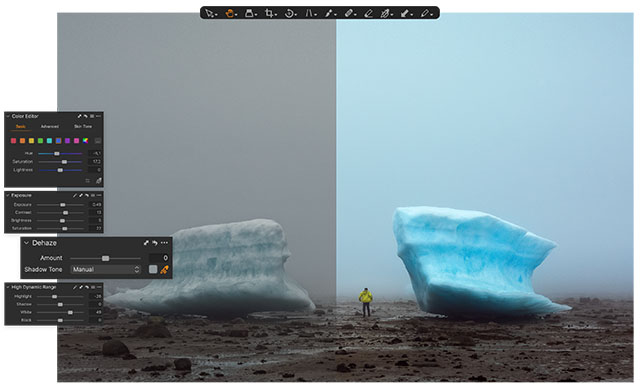
IR: I know I said that was my final question, but something you just said reminded me of another question I'd like to ask. Capture One has a rich history of providing high-end solutions to professional photographers. Over the last few years, the software has become more accessible for hobbyists and enthusiasts. What's the challenge associated with developing software for such a wide range of users? How do you develop software that is accessible and approachable without sacrificing any of the high-end capabilities? How do you serve such a wide user-base with a single software solution?
RO: Yeah, it takes incredibly deep understanding of what is the core need of the customer and what are the things we will never compromise on because we know that they are fundamental to everyone in the photography space. If you are someone who has the willingness to spend from a couple thousand to $10,000 on your equipment, then you're someone who has sent us an incredible signal that you don't want to compromise on the quality of the end product. That's something we're incredibly clear-eyed about and something we hold onto in a strong way.
The kind of thing we know we have to think carefully about are the different segments and types of users. How do we present the tools and how do we make them available to them? And also, what are the types of features and capabilities that each one of these types of users will require. That's why we constantly stay in very close dialog with many different types of users to make sure that we are never confused about what it is that each one of them will need.

So far, I think we've done very well in making sure we don't compromise on the core, the heart, of what Capture One does. While, at the same time, we get a little more experimental about how we present it and how we onboard brand-new users. Ultimately, the best results in image editing will be the result of having deep insight into how that image was formed and all of the aspects that went into it.
We know that independently of whether photography is a business, side-business or a hobby, it is at the core of what participants in the community want to learn. They want to learn the foundations of how this image became what it is and how they can transform their images into the vision they have in their head. We don't lose sight of all those things. It's a huge part of our internal dialog, how we do make sure that we never compromise on our core.
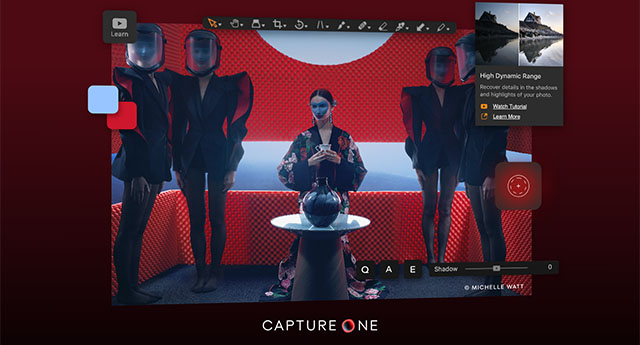
IR: That was a really good answer to the question.
RO: I'm really glad that we got the time to speak, Jeremy.
IR: Thank you very much for your time.
Thank you again to Rafael Orta for taking the time to chat with us. If you'd like to learn more about Capture One 21, please visit Capture One. From there, you can learn about the software's key features and download a free trial. For brand-specific versions, plans start at $14/month and perpetual licenses start at $199 for new users. Stay tuned to Imaging Resource for the latest on Capture One software.